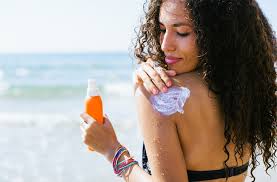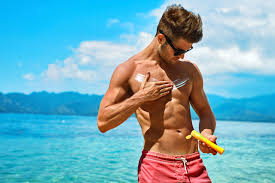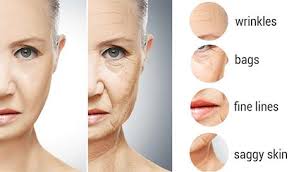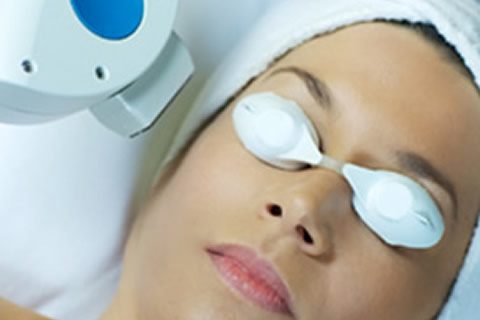Sun Damage, Premature Ageing and is it reversible?
- Sabetian Natural Appearance Clinic
- Jan 28, 2020
- 5 min read
Updated: Mar 9, 2020

1. Sun Damage to Skin
Going out in the sun without enough sun protection will increase your risk of sun damage also known as photo damage.
There are two forms of sun damage:
1) Chronic photo damage, which causes facial appearance change, such as the fine and coarse wrinkles.
2) Acute sun damage begins as sunburn – painful, long-lasting and very harmful to the skin’s overall health.

2. Understanding UV Radiation
Most skin cancers are caused by excess exposure to ultraviolet (UV) radiation from the sun.
In New Zealand, UV radiation levels are particularly high from September to April. It is important to be Sun Smart during these times.
The sun sends out different types of radiation:
sunlight (you can see and feel as heat)
infrared radiation (you can feel as heat)
UV radiation (you can’t see or feel)
Caution needs to be taken in cool and cloudy weather throughout the season.
When it’s cool it means there’s less infrared radiation but not necessarily less UV radiation. You can still get sunburn on cool and cloudy days known as windburn.

Types of UV radiation
UV radiation is invisible and a longer wavelength than visible light. It’s considered by wavelength into UVB, UVC, and UBA being the longest.
· UVA penetrates the skin most deeply, it causes tanning, skin ageing and DNA (cell) damage.
· UVB stimulates vitamin D production in the skin. It also causes damage to superficial epidermal layer of the skin causing sunburn. It is the major cause of Non Melanoma Skin Cancers (NMSCs). UVB does not pass through glass.
· UVC doesn’t typically penetrate past the epidermis. Ozone in the atmosphere absorbs all the UVC from the sun, however workers may be exposed to UVC in laboratories or when arc welding for example.

3. Penetration of UV radiation into skin:
Here is a good example of a 69-year-old man who drove a delivery truck for 28 years. You can see it shows damaged skin on the left side of his face, versus the right side.

UVA rays penetrate glass while UVB rays do not.
Published in the New England Journal of Medicine, the 69-year-old’s photo shows how much more aged one side of his face is than the other. The results show significant differences were detected for wrinkles, skin roughness, skin quality, skin hydration, and skin laxity (looseness) between the side of the face exposed to sunlight (UVA rays) through glass and the side that was not. The authors conclude that, “this study suggests the potential benefit of daily UVA protection during non-deliberate exposure indoors as well as outside.”
However this shocking photo of a truck driver is proof that we really need to be more concerned with the everyday effect that sun has on our skin.
4) Protecting your skin against UVA and UVB rays
The best Sunscreen that protects your skin from both UVB and UVA is “Broad Spectrum” and offers an SPF of 30 or higher. Everyone should use Broad Spectrum sunscreen every day to protect your skin from the harmful effects of sun. Every small amount of exposure every day can build up over time. Apply generously.
Remember rain or shine as kiwis saying, slip (shade) slop (sunscreen) slap (hat) wrap (sunglasses)
New Zealand has the highest rate of melanoma in the world, killing more than 300 people each year.
Sun exposure is responsible for most of the visible aging of your skin — far more than all other factors combined.
If you want to look younger, free from all the facial skin aging and prevent skin cancer wear SUNSCREEN.

5. Vitamin D
Your skin is the body's largest organ; it's a barrier that protects us from the elements, produces Vitamin-D, and most importantly shields us from harmful rays of the sun.
Vitamin D is important for keeping us healthy. It’s essential nutrition because it controls Calcium levels in the body and is needed for healthy bones, muscles and teeth. You make vitamin D whenever you get sunlight (specifically UVB) on your skin. But, because of the risks of sunburn and skin cancer, you need to be careful how much sunlight you get. The lighter your skin, the less sunlight is needed on your skin to make vitamin D.
A better way to get your Vit D is through food, such as:
oily fish (eg, salmon, tuna, sardines, eel and warehou)
milk and milk products
eggs
liver
Check the ingredients lists on these foods to see if extra vitamin D has been added.
6) How can we prevent or reduce these damages
There are two main factors controlling the skin aging.
Firstly Genetics plays a part in determining the normal loss of collagen, decreased sweat gland function and elastic fiber stability as we age. Secondly Aging is the main cause of skin aging and or premature aging. We cause it ourselves, from smoking, bad diet, stress, topical products and finally Ultraviolet (UV) exposure from sun.
The biggest contributor to aging skin, from both Genetic and Aging standpoints, is the SUN exposure we all get during our lifetimes. Lack of protection, exposure to UV rays causes most age spots, wrinkles, and irregular skin cells that can lead to cancer. These UV rays can penetrate deeply into our skin where they can break collagen and elastic fibers causing our skin to wrinkle and droop. In addition, these UV rays bind together parts of our DNA causing thymine dimers, one of the main factors in skin cancer formation.

7) Can we reset or reverse sun damage and pre mature aging caused by the Sun?
If you are suffering from sun damage such as pigmentation, sun spots, reduced skin elasticity, the degradation of skin texture and pre mature aging then yes you can take a few steps towards reversing these concerns.
Unfortunately, sun damage isn't only skin-deep. UV radiation alters the actual DNA of your skin cells, causing lines, wrinkles, discoloration, and even cancer.
Let’s just say you're an expert when it comes to protecting against sun damage. You've got sunscreen on your key-chain, in your lip balm, and all over your skin. But you could still have plenty of sun damage left over from your youth. (Remember squirming away from your mum as she tried to put on your sunblock?)

"There's a meter in your skin. Every minute you're out in the sun, your body registers it," says Neal Schultz, M.D., a cosmetic dermatologist based in New York City.
8) Damage Control
Here are 4 steps you can do to reverse Sun damage.
1) Chemical Peels – This treatment removes damaged cells from the upper layers of your skin. The new skin that replaces it is usually smoother and less wrinkled in appearance.
2) Microdermabrasion - This technique uses tiny grains, crystals, or diamond tips to remove the outer layer of skin. It also prompts the growth of collagen.
3) Laser therapy such as Broad band light (BBL) – Regular BBL treatment improves skin texture and age spots and reverts the skin on a genetic level back to a younger state. This procedure allows the skin to repair itself, forming new healthy skin containing new collagen and elastic fibers. This treatment has a down time of two weeks.
4) Botulinum Toxin (wrinkle relaxer) and Dermal Fillers - Can help with heavier lines and wrinkles as these are much more likely to make a visible difference. Dermal fillers add volume to saggy skin and smooths heavier (Static) wrinkles.
For sun damage you need treatments that penetrate deeply into your skin in order to start treating the sun damage.
If you don’t like your sun damage and aging skin you can reverse the sun damage and skin’s aging process with these safe and effective options. However, the best policy is to prevent skin damage in the first place is by using the right sunscreen every day.
“Just starting to be careful with sun protection will, alone, help reverse sun damage,” Dr. Bank says. Like other organs of the body, the skin has a natural tendency to want to repair itself.”
Thank you for reading my blog I hope you have enjoyed it. Soraya x




















Comments